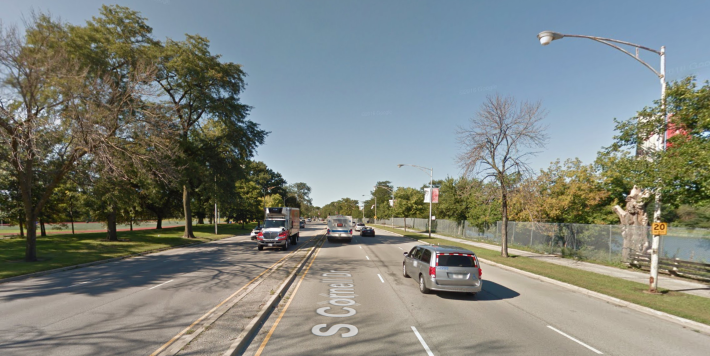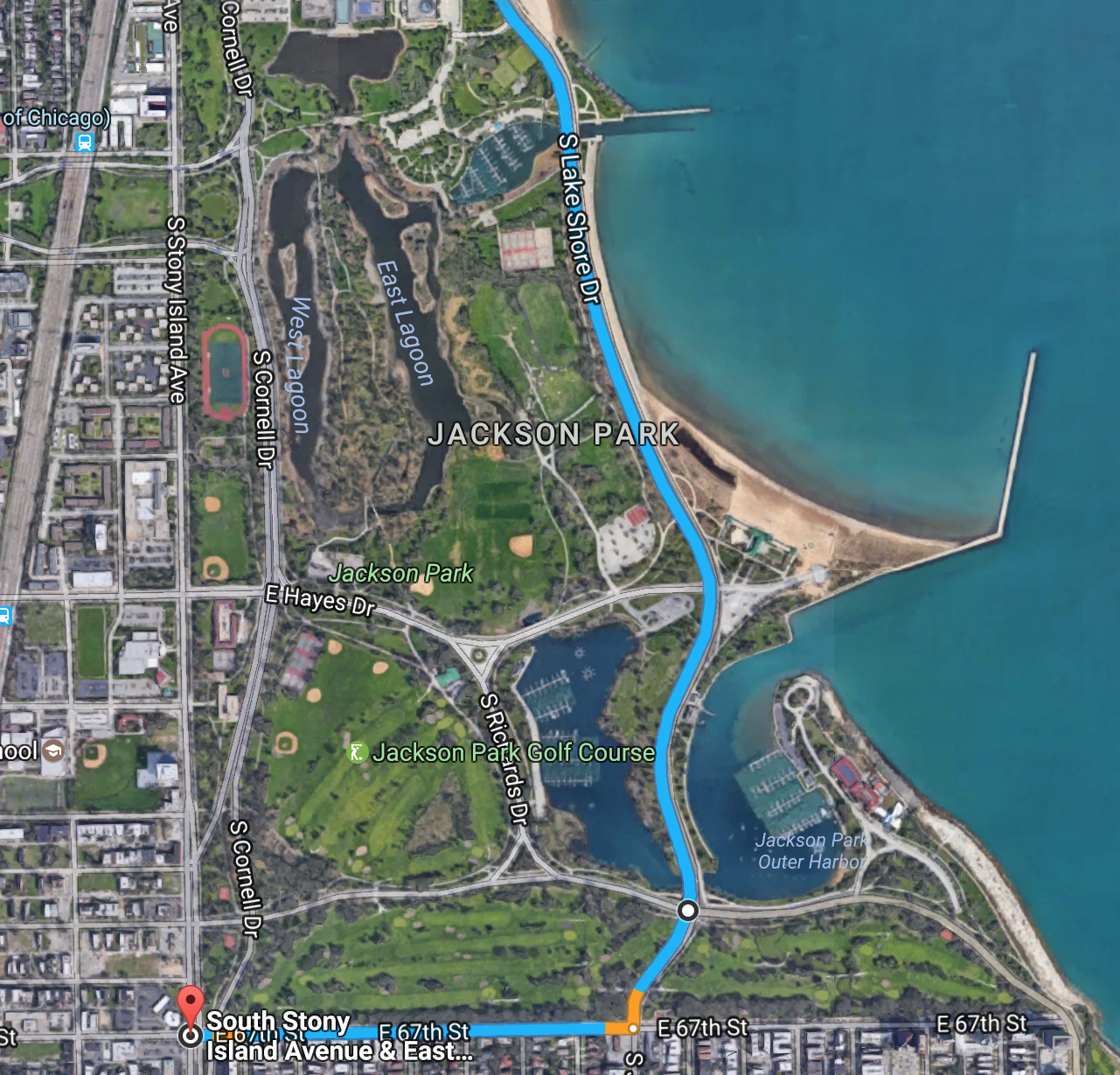The Chicago Tribune recently reported that the Obama Foundation has proposed pedestrianizing stretches of the highway-like roads that run through Jackson Park, the future home of Barack Obama’s presidential library, to create a museum campus. The tone of the article, and quotes from some community members, suggest that this change would cause strangle transportation on the Southeast Side.
However, it’s actually a commonsense plan that would greatly improve the safety and utility of the green space, while returning the park to its roots as a place for relaxed recreation, rather than high-speed motoring.
The library would be located between Stony Island and Cornell, 60th and 63rd Street, currently home to a running track, football field, and baseball diamonds. The foundation has floated the idea of pedestrianizing Cornell, a generally six-lane road that serves as a major barrier between the east and west sides of the park, between 60th and 67th.
There’s also a proposal to pedestrianize Marquette Drive between Cornell and Lake Shore Drive, which would unify the two segments of the Jackson Park Golf Course, which are currently separated by four-lane Marquette. This would facilitate plans to upgrade the little-used facility into a tournament-grade course.
The way the Tribune article is written implies that opening these streets for car-free walking and biking would cause major hardships for drivers. The article refers to the change as “closing a major thoroughfare that connects Lake Shore Drive motorists to the South Side and a key route to Indiana and Michigan” and calls it “a critical connector” for local residents.
"It is my belief that [pedestrianizing the streets] will virtually cul-de-sac the Southeast Side of Chicago ... and stunt the growth," said the Reverend Byron Brazier, pastor of nearby Apostolic Church of God. This car-centric statement from Brazier isn’t surprising, since his father Bishop Arthur Brazier led a successful campaign to tear down a mile of Green Line elevated tracks between Cottage Grove and Stony Island, which ran by his church. This reduced transit access for Woodlawn residents.
As outlined by the Trib argument against pedestrianizing the streets is that drivers currently like to exit LSD at 57th, by the Museum of Science and Industry, and take Cornell south until it merges with Stony Island. From there they proceed on Stony to neighborhoods to the south, or to the Chicago Skyway.
But while drivers are currently using Jackson Park as a high-speed shortcut, that doesn’t mean that they have to do this, or should. According to 2014 Illinois Department of Transportation traffic counts, the stretch of Cornell between 57th and 67th saw 19,300 average daily trips. But while most of that segment is six-lane, studies show that roads with one travel lane in each direction plus turn lanes can accommodate up to 20,000 vehicle trips a day without undue congestion, which is why CDOT’s standards allow for “road diets” on streets with below-20,000 ADT.

Moreover, the four-lane stretch of Marquette between the Drive and Cornell saw a mere 2,300 ADT. So both Cornell and Marquette currently have far too many lanes for the amount of traffic they carry, which encourages speeding. At the very least, road diets would be appropriate for these streets.
Moreover, there’s no reason drivers need to take Cornell in order to continue south of 67th on Stony Island. The logical alternative is to take Lake Shore drive to its southern terminus at Marquette and then proceed south to 67th, then west to Stony Island. Another alternative is to exit the drive at 57th and that that street to Stony.
As the Trib article notes, park designers Frederick Law Olmsted and Calvert Vaux originally envisioned the roads though the park as venues for pleasure cruises, not high-speed traffic conduits. Charles Birnbaum, president and chief executive of the Cultural Landscape Foundation, told the paper that "Slower-speed travel is what should happen." He noted that the city could try pedestrianizing the streets on a temporary basis, as was successfully done in New York’s Central Park.
In a separate article, Tribune architecture critic Blair Kamin wrote favorably of the proposal, noting that “Cornell is essentially a highway — a gash of asphalt that slices the once-serene Frederick Law Olmsted-designed park into isolated swaths of green.”
Kamin sensibly noted that this doesn’t have to be an all or nothing proposal either. While speed humps are probably a non-starter for these streets, the speed limits could be lowered, and lane reductions would calm traffic, shorten pedestrian crossing distances, and allow for additional green space. “Chicago's Department of Transportation already is using such strategies in the Loop and in the city's neighborhoods — generally, with positive results.”
Completely pedestrianizing these streets would be ideal, in effect creating a second museum campus on the South Side. But if that turns out to be too politically difficult (and, of course, local residents should be given a full opportunity to weigh in on the proposal), lane reductions would be a good consolation prize. Either scenario would make Jackson Park safer and better, rather than creating creating a traffic nightmare or killing commerce.
Did you appreciate this post? Consider making a donation through our PublicGood site.






